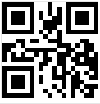Table of Contents
Barcodes
A Barcode is assigned to a Volume (tape, box, etc) to give it a unique identity and make it identifiable from all other Volumes.
At a minimum the Barcode must be unique to the Customers Media Type. TapeTrack does not allow duplicate Volume-ID's (Barcodes) within each Media Type but can also be set to disallow duplicate Volume-ID's within a Customer-ID or globally.
If you have multiple Clients that exist within your TapeTrack database, setting TapeTrack to disallow duplicate Volume-ID's globally may not be able to be enforced as each Client may use a standard labelling, eg 123456L5, and have many Volume-ID's that match other Clients.
If you only have inhouse Volumes, enforcing unique Volume-ID's over your entire tape stock is an easier concept to enforce.
Barcode Types
TapeTrack does not enforce what type of Barcodes you can use on your tape stock. As long as you have a Barcode reader that can read the Barcodes and transmit that data to TapeTrack you can utilise any available Barcode format.
Example Barcode Formats
QR Barcode
2D Barcode
Radio Frequency Barcode
Barcode Rules
- The Barcode value for each Volume-ID must be unique within a Customer/Media Type scope at a minimum. If TapeTrack is set to disallow duplicate Barcodes at a Customer or Global level the Barcode value must be unique at that scope.
- The Barcode value must be between 2 and 10 characters long.
- Must only contain Alpha [A-Z] and Numeric characters [0-9] but can contain a dash as long as the dash is not the first character.
- Can not contain a space or any special character other than a dash.
- Must only use upper case characters.
- Must comply with the Volume-ID filter specified in the Media Type object.





